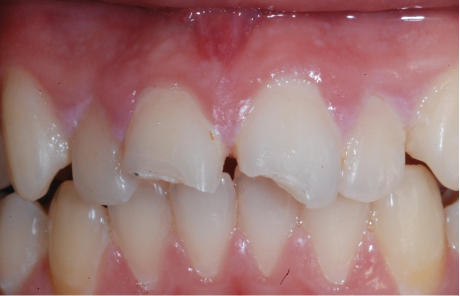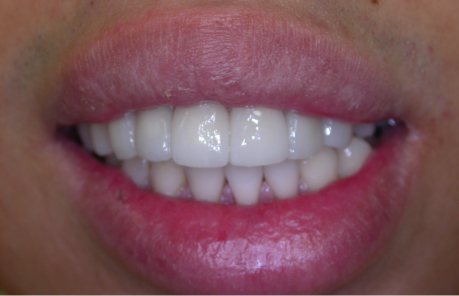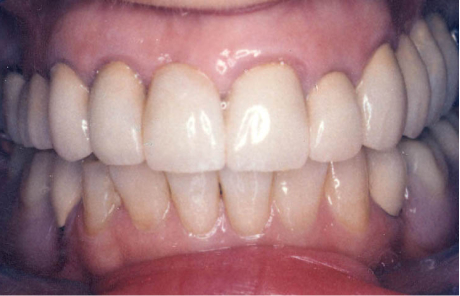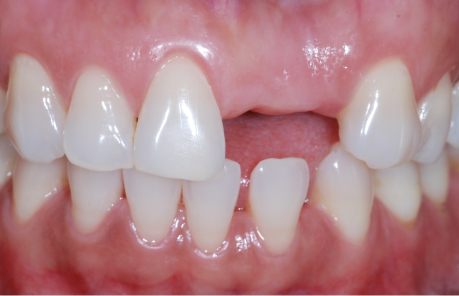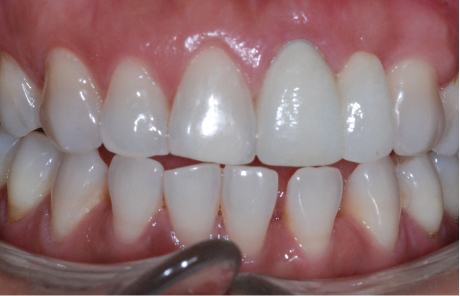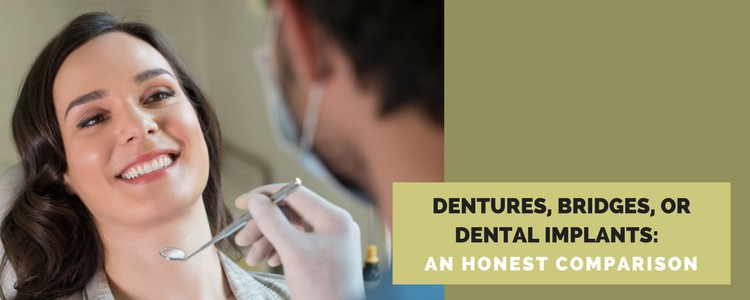Dental crowns often referred to as ‘caps’, are artificial teeth that are meant to act as a protective outer layer to protect a damaged tooth underneath and prolong the life of your natural teeth. They are commonly used as a type of restorative dental treatment, placed over a tooth being restored – such as a tooth that has had a root canal, a very large fracture, a large filling, or severe tooth decay. Dental crowns can fix cracks and protect your teeth, but sometimes, we need to fix dental crowns as well.
When placed properly, crowns should look and feel like they are a natural part of your mouth. They should allow you to have the same bite force when eating food as your natural healthy teeth would allow.
If however, the crown is less than ideal it can create problems with your bite, the health of the gums, or even the longevity of the crown and/or the tooth itself. If you are feeling that your dental crown is not fitting correctly, you should visit the dentist to have it fixed.
‘One of the longest-standing issues in dentistry is crowns that do not fit.’
– Dentistry Today
What Makes a Good Crown?
In order to explain how to fix an ill-fitting crown, it is important to understand just what makes a crown good, or better yet, excellent; so to begin with here are a few parameters:
- The margin, that is where the crown meets the tooth, should be as smooth and imperceptible as possible and the contour of the crown should follow the normal contour of the natural tooth in that area. If there is a ledge (overhang) it will tend to collect plaque and could lead to decay or gum problems.
- The crown should seal the tooth and fit very snug. In general, any gap between the tooth and the crown at the margin greater than 50 microns can be detected by feel and sometimes visually and would be unacceptable. If there is a large gap, this space will be filled with cement, but over time a large cement gap will wash out much easier, potentially leading to decay developing underneath the crown.
- Once the crown is cemented to the tooth it should stay in place for many years.
- Ideally, the crown should look as natural as possible in color, size, and details and ideally blend in with your other teeth. The exception here would be for gold crowns, however other than the color they should still be as natural as possible.
- The contacts between the teeth should be tight enough to prevent food from being pushed between the teeth, but not so tight that it is impossible to floss.
- The bite, that is the contact between the upper and lower teeth should feel normal with an equal amount of pressure as your other teeth.
What if the Above Parameters are Not Met?
- If the contour of the tooth is not ideal, sometimes your dentist can make some minor adjustments to the crown. If it is a large amount, your dentist may choose to send it back to the dental laboratory to make changes.
- Open margins may be a result of the crown not seating fully on the tooth. With a little detective work, your dentist may be able to identify what is preventing the crown from fully seating and then can adjust either the crown or the tooth to fix the problem. On the other hand, if the crown is fully seated and yet an area of the margin is still open, there may have been a distortion in either the impression or the model on which the crown was made. Your dentist will likely have to take a new impression.
- If a crown falls off repeatedly it is often because the fit of the crown to the tooth is not precise, or it may be due to the shape of the tooth underneath. The shape of the prepared tooth is parallel walls and longer sides/teeth. Sometimes this cannot be achieved because the natural tooth is too short or it has broken. In these cases, it may be possible to shorten the gums to increase the effective length of the tooth. It may also be possible to anchor a post into the tooth (assuming it has had a root canal).
- If there is an issue with the esthetics the crown can be sent back to the lab to correct the color, contour, etc. Sometimes a single crown can be challenging to match, even with photographs. However, in those challenging cases, your dentist may ask you to go directly to the lab so that they can see you in person and do a custom shade and staining appointment. Making beautiful crowns is an art….and a good ceramist will have the skills, artistic eye, and experience necessary to make even the most difficult crown beautiful.
- Contact points are easy to fix. If they are too tight your dentist can polish the crown; if it is too loose, the crown will likely need to be sent back to the lab for some modification.
- If the bite feels too heavy, a simple adjustment will often fix the problem. If it is too “low” then the crown can be sent back to the lab to have material added to the crown.
What Can Cause Dental Crowns To Come Loose?
Crowns are strong, sturdy, and long-lasting, often anywhere from 10-20+ years. However, they require great precision when it comes to manufacturing and placement. Every crown is made in a lab-based on specifications provided by the dentist. These specifications need to be precise, the manufacturing needs to be precise, and the dentist needs to have a high level of skill to place and cement the crown perfectly.
If any of these steps are not performed properly, it can result in an ill-fitted crown that does not feel natural or come loose over time.
Apart from imperfect dental work, here are some other factors that can make the crowns come out of place
- Physical trauma – if you get hit or hurt where the crown was placed, it can cause it to come loose either due to loosening of the cement underneath and in some case because the tooth underneath has broken
- Clenching/grinding – this often happens unconsciously, especially when people are sleeping, and can result in damaging the crown
- Underlying decay – if the damaged tooth that the crown was protecting starts to decay along the gum line, it can cause the cement that holds your crown in place to break down and the crown to fall out
- Sticky sweets – caramel and other forms of sticky candies can pull the crown out of place by causing gradual damage
How would you know if your dental crowns don’t fit? To find out, read this article that we had previously published – ‘Signs Your Dental Crowns Don’t Fit’
How Does a Dentist Fix Dental Crowns?
Making a crown fit perfectly requires precision. If a crown is not placed perfectly, it can cause discomfort or inflammation of the tissues.
Dental Crown Adjustments
Adjustments can include ‘filing’ or ‘shaving’ a dental crown to make it fit well with surrounding teeth….in other words, to make it fit “your bite”.
With most crowns, slight adjustments may be possible, but if it requires a lot of adjustments or changes it is often best to send it back to the laboratory to have the changes made.
Replacement
There are situations where you may simply need your crown replaced. If the permanent crown has chipped or broken, if the crown does not fit properly, seal the tooth or if there is decay under the crown, then the crown will most likely need to be removed and replaced. Learn more about the cost of dental crowns in Vancouver if you are looking into a crown replacement.
The lifespan of Dental Crowns
From the Canadian Dental Association – ‘Crowns are strong and generally last for about 10 years or longer if you take good care of them.’
There are many factors that can contribute to the longevity of a crown. These include the materials used, the patients’ at-home care routine, and how well the crown was placed by your dentist.
If you had your crown placed many years ago, and now the crown feels loose or chips, it is possible it’s simply getting old and will require a replacement soon.
Fitting Dental Crowns
Most dentists are very vigilant when they are fitting permanent dental crowns. Your dentist knows that this crown must act and feel like one of your regular teeth, and thus, they take great care to fit it properly. When fitting your crown, your dentist will likely take an impression of your prepared tooth, your bite, and the teeth surrounding the tooth that will be crowned.
Your dentist will then use the impression to create a model on which the crown is designed and fitted. Alternatively, with the use of computer imaging, your dentist may take a computer image of your teeth instead of a physical impression.
Sometimes, your dentist will place a temporary crown while they wait for your permanent crown to be made. Temporary crowns are usually made out of acrylic or composite resin which is also used for bonding and fillings. You can have a temporary crown placed quickly, using the impression of your old tooth, however, temporary crowns may not fit as nicely as permanent crowns.
Visit VCCID for a Consultation
A dental crown that fits poorly can cause bite problems and severe discomfort for the patient. If you lose a crown, or the crown falls out, it’s sometimes treated as a dental emergency. Seeing a dentist as soon as possible is critical to protect the tooth underneath from infection and further damage.
Our team at VCCID knows how uncomfortable a poorly fitted crown can feel as it can affect everything from your bite and your smile to your speech. Dental crown adjustments are generally a quick procedure and you will leave feeling comfortable. If you find that your dental crowns don’t fit, visit us and get your bite checked.
Our clinic is conveniently located in the Metrotown Mall, Burnaby and we are always looking to help new and existing patients. Visit our website to contact us online or call us at (604) 434-0248 to get your crowns fitted today.



